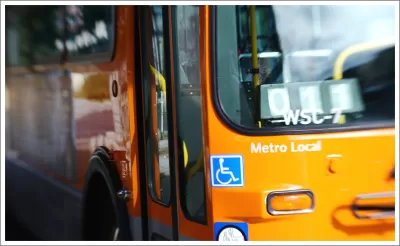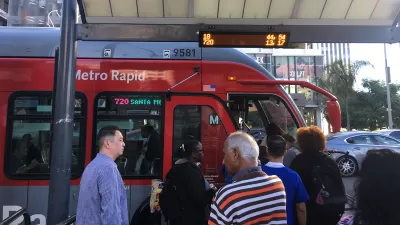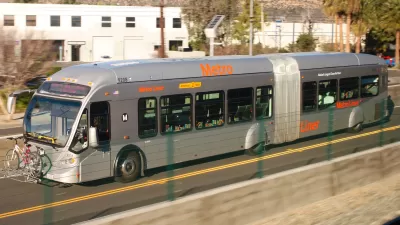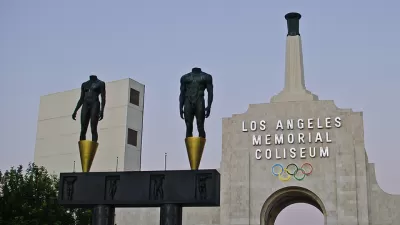One of the largest transit systems in the country continues to lose large numbers of riders. But the causes behind the drop and the solutions to stop it are hard to pinpoint.

Laura J. Nelson reports on the current state of transit ridership in Los Angeles County. The Los Angeles County Metropolitan Transportation Authority’s bus system alone has seen a drop in ridership of 25 percent, or 95 million trips, in the last decade.
The reasons for the decline vary and include a stronger economy—when people buy cars—and a decrease in immigration as well as a network of bus service that critics say does not meet the needs of riders.
"The bus exodus poses a serious threat to California’s ambitious climate and transportation goals. Reducing traffic congestion and greenhouse gas emissions will be next to impossible, experts say, unless more people start taking public transit," writes Nelson.
The solutions are varied as well. Metro has its eye on bringing in new riders who now drive by speeding up travel times and by better targeting service to places people need to go. But transit advocates say that improvements should focus more on the needs of existing riders, many of whom are Latino and black and are dependent on transit. They want Metro to put in more bus-only lanes and implement all-door boarding to decrease travel times, and they want to see more buses on the streets.
Still, the challenges to increasing ridership on buses in Los Angeles are immense. "When someone buys a car, they become less likely to take transit and more likely to drive, studies show. Non-car owners now have more alternatives than ever, including Uber and Lyft, car-sharing services like Zipcar, and rental bikes and scooters," notes Nelson.
FULL STORY: L.A. is hemorrhaging bus riders — worsening traffic and hurting climate goals

Planetizen Federal Action Tracker
A weekly monitor of how Trump’s orders and actions are impacting planners and planning in America.

Congressman Proposes Bill to Rename DC Metro “Trump Train”
The Make Autorail Great Again Act would withhold federal funding to the system until the Washington Metropolitan Area Transit Authority (WMATA), rebrands as the Washington Metropolitan Authority for Greater Access (WMAGA).

DARTSpace Platform Streamlines Dallas TOD Application Process
The Dallas transit agency hopes a shorter permitting timeline will boost transit-oriented development around rail stations.

New Alaska Bitcoin Mine Would Burn as Much Energy as the State’s Largest Coal Plant
Fueled by “stranded” natural gas, the startup hopes to become the largest in the US, and to make Alaska an industry center.

New Jersey Duplexes Elicit Mixed Reactions
Modern, two-unit residences are proliferating in northern New Jersey communities, signaling for some a boon to the housing supply and to others a loss of historic architecture.

Renters Now Outnumber Homeowners in Over 200 US Suburbs
High housing costs in city centers and the new-found flexibility offered by remote work are pushing more renters to suburban areas.
Urban Design for Planners 1: Software Tools
This six-course series explores essential urban design concepts using open source software and equips planners with the tools they need to participate fully in the urban design process.
Planning for Universal Design
Learn the tools for implementing Universal Design in planning regulations.
Municipality of Princeton
Roanoke Valley-Alleghany Regional Commission
City of Mt Shasta
City of Camden Redevelopment Agency
City of Astoria
Transportation Research & Education Center (TREC) at Portland State University
US High Speed Rail Association
City of Camden Redevelopment Agency
Municipality of Princeton (NJ)





























